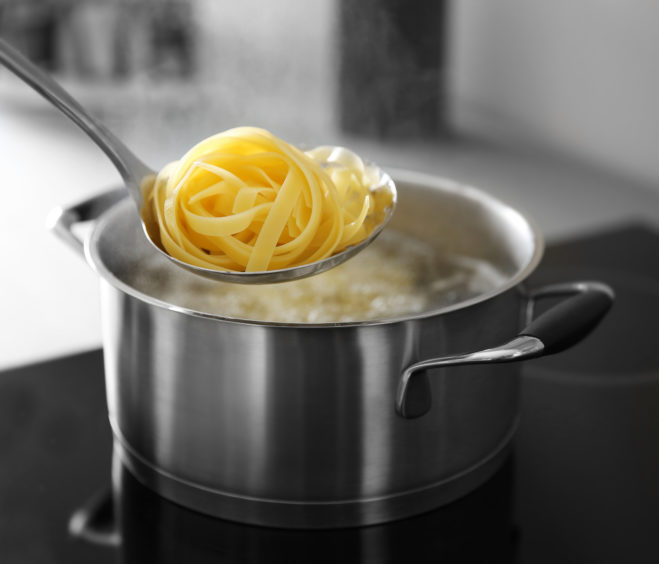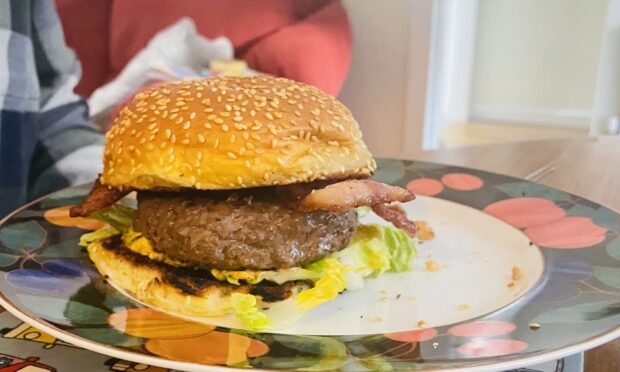Cooking pasta is as easy as pie, once you’ve mastered the technique and know what to look for. Here’s a simple guide to some popular types, what to pair them with and some common myths, busted.
Despite not originating on our shores, pasta is something us Scots hold dear to our hearts when it comes to meal times – just think back to the early days of lockdown when many of the big stores ran out of it for several days due to panic buying.
Owing to its convenience and cheapness, it fits in with our busy daily lives and is easy to adapt in minutes at any time of the year.
It’s also suitable for almost every type of diet you can think of, with many gluten-free options including corn, maize and brown rice pastas becoming more commonplace.
Whether you want to make your own fresh pasta at home or buy your favourite as part of your weekly shop, we’ve put together a handy guide to help you score a perfect dish every time.
Different types of pasta
Pasta comes in all sorts of shapes and sizes. Often we stick with our favourites – spaghetti, penne, macaroni – but it’s worth branching out as the right pasta can really heighten a dish. Different types of pasta will have different cooking times and serve different purposes.
As a rule of thumb, fresh pasta (the type that’s already soft) will take about three minutes to cook properly. If it’s dried pasta then it will usually say how long to cook it for on the packet, though this is usually about 10 minutes – the perfect amount of time to make a delicious sauce.
Here are five of the most common types of pasta that you’ll find in all of the supermarkets and most food shops.
Conchiglie
The shell-shaped pasta that’s always a hit with the kids, this one arguably has the best sauce-retaining properties, due to its curved shape and is ideal for pairing with your favourite pesto or tomato sauce. If you’re wanting to introduce the little ones to pasta, this is a great one to start with.
Penne
Perhaps the most popular type of pasta, the diagonally-cut shape means this one also has great sauce-retaining properties and is best used either in pasta bakes or for thick and creamy sauces.
Fusilli
Similar to penne, fusilli-shaped pasta is great for using in thick sauces and perhaps easier to eat due to its twirled shape. It is also most likely to maintain its structural integrity when it comes to dishes using fish, meat or chunky vegetables.
Spaghetti
Perhaps one of the most controversial types of pasta, if there is such a thing, spaghetti lends itself to the classic bolognese or meatballs with tomato sauce. Though its divisiveness mainly revolves around how difficult and messy it can be to eat spaghetti, it is one of the easiest to get a hold of and works with many sauces.

Macaroni
We’ll let you off with minestrone soup but if you even try to use macaroni pasta in anything other than good old mac ‘n’ cheese it’s likely you’ll be added to some sort of watchlist. The ultimate comfort food, these small pasta tubes can be cooked in a warming cheese sauce to create the ideal dish for any occasion.

What are the common mistakes when it comes to cooking pasta?
You might not think it at first, but it’s likely we are cooking pasta wrong without realising it as there are several common misconceptions that can leave our pasta gloopy or tasteless.
Putting the pasta in too soon. A rookie error that many pasta newbies make is putting the pasta in the water before it’s come to the boil. It shouldn’t be added to cold water. Wait until the water has boiled, then add your desired amount of pasta, then cover the pan with a lid to bring it back to the boil. Start timing your pasta’s cooking time from when the water is boiling again.
Using too little water. A common mistake that is hugely important to pay attention to when wanting to perfect your pasta technique. As recommended by Nigel Slater in his book “Real Fast Food”, the ideal water-to-pasta ratio is 4.5 litres/ 8 pints of water per 450g pasta.

Oiling the water. It is true that oil stops pasta sticking together, which can sometimes be a godsend if you’re confined to the gloopy starchyness that often plagues those who can only eat gluten free. But, often, cooking pasta in oil also stops the sauce from sticking to the pasta, meaning you can be left with just a plate of sauce at the end.
Not salting the water properly. Unless you buy a flavoured type, pasta is generally tasteless, though it does pack more of a punch if you add some salt to the water. We’d recommend around ½ a teaspoon of salt for every two pints of water. Be sure to add the salt after the water has boiled but before the pasta goes in for maximum impact. This helps to add some flavour to it.
Other tips and tricks
If extra ingredients aren’t available to make a sauce, a simple splash of oil, some soft or grated cheese, or even a knob of softened or melted butter stirred through it can make a great alternative.
Don’t go over the recommended boiling time. You want to cook pasta until it’s al dente – tender but still with a bite to it and no taste of flour. This is also why pasta should never be cooked in a slow cooker or crockpot.
Some people claim to save the pasta water to help enhance the flavour of the pasta sauce. So next time you’re making pasta, instead of draining it in the sink, why not drain the pasta into a pan or bowl and cook some of the water into your sauce?
Finally, if tragedy strikes and you end up with more pasta than you can manage or some make an escape during the draining or cooking process, try not to throw it down the drain as pasta can continue to expand when it meets water.













